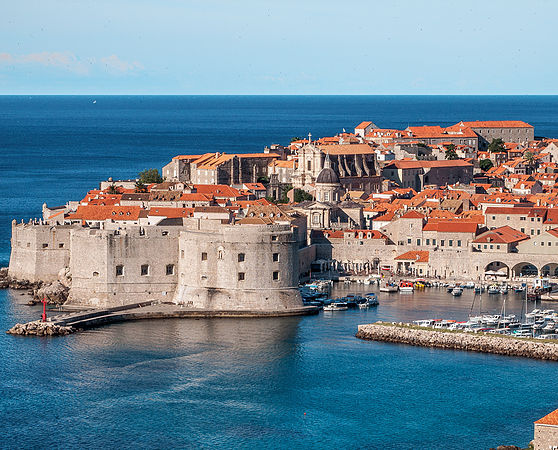
Walled Cities, Open Societies – 2nd meeting
In January 2017, the City of Siena was the host of a UNESCO event, where representatives of 25 European cities gathered to discuss the management of urban areas within historic walls in World Heritage properties.
The meeting primarily focused on the current role and functions of historic walls and their new symbolic values. Their impacts on community involvement, participatory approaches, and the integration of historic walls within broader site management systems were discussed through key-note presentations and debates, during an intense and fruitful 2-day programme.
Building on the cooperative atmosphere of the Siena event, the Ministry of Culture of Croatia offered to host a second workshop, in the City of Šibenik, to reinforce networking among relevant cities and further advance their capacities on the management of this specific cultural heritage. Similar to the first event, representatives of different European World Heritage offices and academic institutionsshared their expertise and point of view. For its part, the Municipality of Florence’s World Heritage Office was represented through its permanent workshop, Heritage City Lab. The primary focus was UNESCO Recommendation on the Historic Urban Landscape, with the aim to
- Improve participants’ knowledge about the Historic Urban Landscape (HUL) approach
- Present experiences on HUL implementation and the tools that UNESCO and its partners have created to support it
- Discuss the application of the HUL approach to the management of urban areas within and around historic walls and fortifications, and train participants on HUL implementation through simulations and group work
- Raise awareness on the importance to adequately manage historical walls within a broader urban context
- Providing input for Member States’ reporting on HUL implementation, due in 2019
Particular attention was paid to the specificities of applying HUL in World Heritage properties with a significant presence of historic walls, fortifications, and fortified urban areas.
As its objective, the HUL Recommendation seeks to increase the sustainability of planning and design interventions, by taking into account the existing built environment, intangible heritage, and cultural diversity along with local community values.
Safeguarding the Historic Urban Landscape is achieved through the understanding and management of the main issues threatening historic cities, such as rapid and uncontrolled urban development, inadequate spatial planning, climate change consequences, market exploitation, and mass tourism. Therefore, an inclusive management approach, aiming for strategic and dynamic alliances between various actors in the urban scene, is to be implemented to shape the identity of the communities and assist in the creation of a future vision.
The Global Report, produced by UNESCO as a contribution to the New Urban Agenda sets forth three key recommendations to enhance the role of culture as “a fundamental lever for Urban Development”:
- People-centred cities are culture-centred spaces: the use of culture as an enabler of social inclusion and creativity promotion, to enhance the liveability of modern urban areas;
- Quality urban environments are shaped by culture: using public spaces for cultural and creative activities means promoting a stronger connection between communities and their environment;
- Sustainable cities need integrated policy-making that builds on culture: integrating culture at the core of local government allows a wider synergy between the various stakeholders involved in the management of urban areas.
All of the above is also intended to support the protection and promotion of the worlds’ cultural and natural heritage, which is recognized within the 2030 Agenda as directly contributing to making cities inclusive, safe, resilient and sustainable (Sustainable Development Goal 11.4).


Source: https://www.walledcities2018.com/



